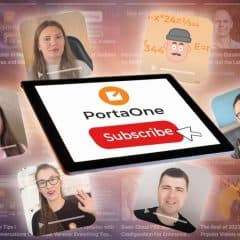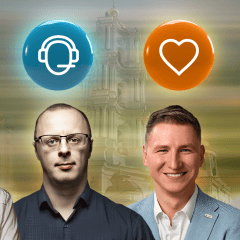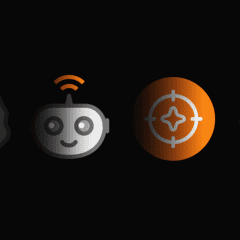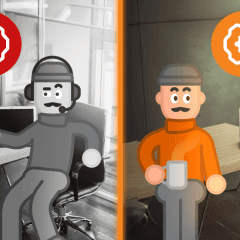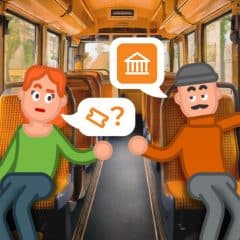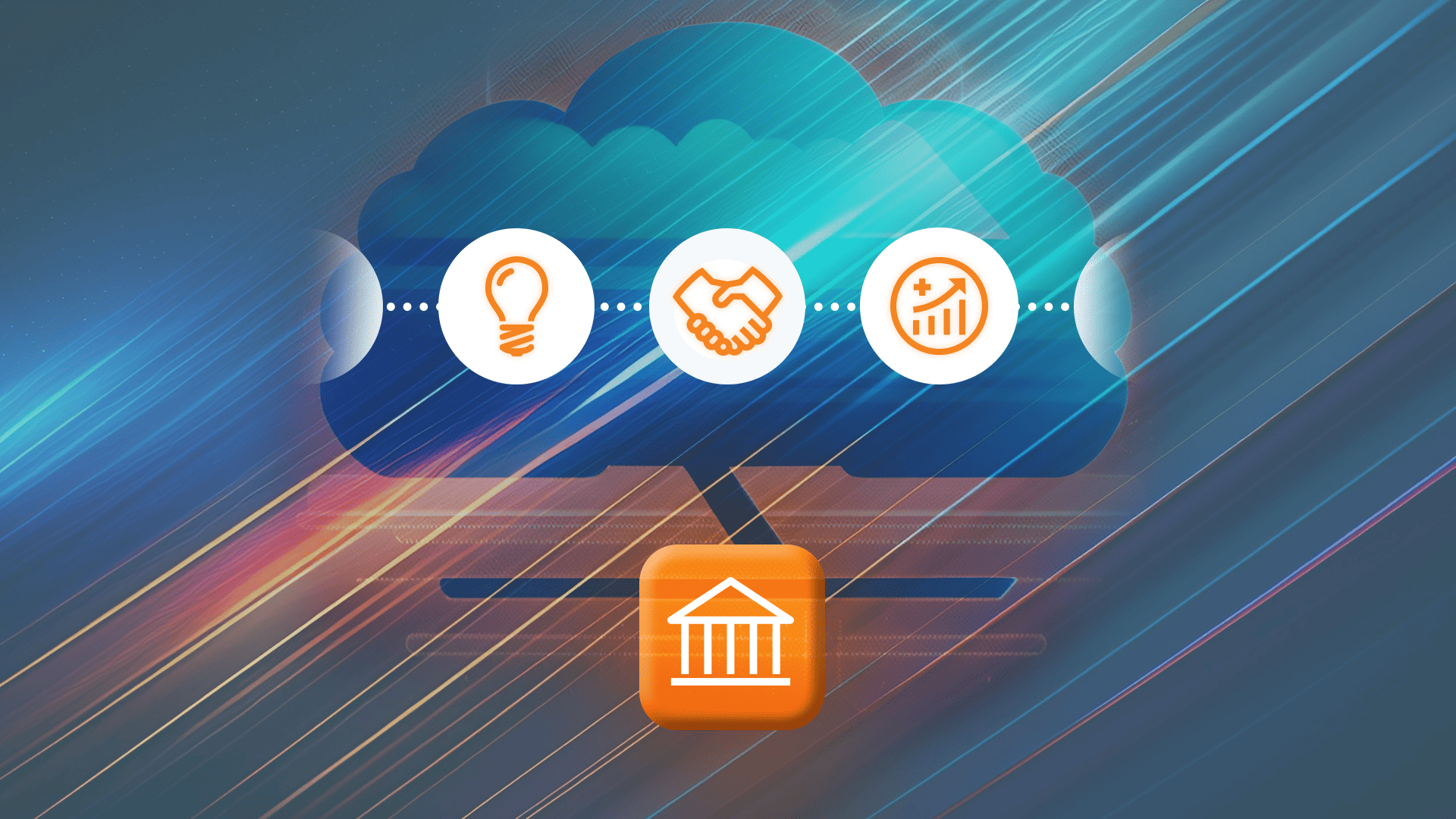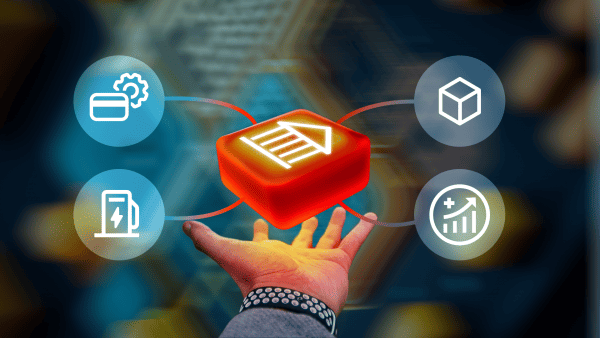Today’s P2A messaging story opens a new chapter for the Connector. On the PortaOne website (which our blog team calls “the mainland”), you can find dedicated sections for success stories and case studies from our customers. This blog will also talk about our customer stories, but we’re going to do it slightly differently. Here, we want to show the human factor behind each “case” and “success.” What does it take to be a founder of a flourishing modern telco? And how can we structure the vendor–telco relationship to ensure it bears fruit over the long term?
To start, we’re going to talk about RGTN, SMS, and P2A. (Ahem, RGTN is an innovative CSP, and SMS you are probably familiar with. But what is P2A? P2A SMS means peer-to-application messaging, and companies – especially banks and financial institutions – across the world are using it to empower consumers and simplify business transactions… which, naturally, means it is bringing significant new sources of revenue for telecom companies.)
Along the way, we’ll take some sidelines into a few other letter jumbles, specifically A2P SMS and IMPS full form, and we’ll even follow that trail into the emerging world of P2A full form in banking. So, now that you’re used to those letters in that order, let’s begin.
AI as the Gateway to Higher Profit Services in Telecom
ChatGPT has been trending for several months now. Meta, Baidu, and Microsoft have also attempted to launch AI-powered conversations. However, with the recent outages reported by OpenAI (ChatGPT’s operator), reliability and availability also came into public focus. That’s why we’re taking the opportunity to discuss the technology of P2A messaging and the pathways it is creating for telecom companies (new revenue, to be specific). Yes, this technology is over six decades old; most humans (even those with minimal understanding of a mobile phone) know how to use it. (Thank you, SMS.) But something new is happening with it that has major significance for telecom, and for the banking and larger financial industry.
Our guide in this P2A messaging journey will be Leonardus “Leslie” Herps, founder and CEO of Redworks and RGTN, telecom veteran, and a long-time customer of PortaOne. Mr. Herps comes from Maastricht in the Netherlands.
The Origins of P2A Messaging
While both P2A and P2P (meaning peer-to-peer) messaging went mainstream in the mid-1990s with SMS and ICQ, the technology is, as we pointed out, over half a century old. In fact, the first computer messages were P2A. Here’s how it all began.
P2A Messaging: The Creation Myth (E.L.I.Z.A. Met PARRY)
In 1961, scientists at MIT launched the Compatible Time-Sharing System (CTSS). E.L.I.Z.A. was the first chatbot to use computer messages via CTSS. Joseph Weizenbaum created E.L.I.Z.A. in 1966. According to MIT News, Mr. Weizenbaum “grew skeptical of artificial intelligence after creating a program that made many users feel like they were speaking with an empathic psychologist.”
The following “proto chatbot” after E.L.I.Z.A. was PARRY, a.k.a. “E.L.I.Z.A. with attitude.” Created at Stanford by Kenneth Colby in 1972, PARRY was “a computer model of paranoia.” The first P2A messages and AI/ML went viral among experimenting psychotherapists. The obvious mashup was PARRY visiting doctor E.L.I.Z.A.
Email as a Stepping Stone to P2A Messaging
Around the same time, Tom Van Vleck and Noel Morris (also of MIT) wrote the “mail” command for the CTSS. Released in 1965, the “mail” command allowed users to send files to each other. Then, in 1971, SNDMSG and READMAIL programs for the TENEX operating system introduced the traditional email syntaxis as we know it today, namely: the “Subject,” “To,” and “CC” headers. That was the same year Ray Tomlinson, an author of READMAIL, sent the first email to himself.
Over the 1970s, email slowly became the default digital communication mode in the nascent ARPANET (later Internet). In 1980, Jon Postel and Suzanne Sluizer published RFC 772 for the Mail Transfer Protocol. This became the Simple Mail Transfer Protocol (SMTP) In 1981 — the same email protocol still in use today. In 1984, Joyce K. Reynolds published the first specification of the Post Office Protocol (POP1). After several revisions, this protocol grew up to become POP3 in 1988. In 1986, Mark Crispin designed the Internet Message Access Protocol (IMAP); the current version of this protocol is IMAP4.
A lot of P2A messaging at this stage of the development of email technology helped users do things that are now automated. Numerous email newsgroups began to appear, covering a range of subjects from local events to “eating less meat” (hello, Meat/Less). You had to send P2A messages to a newsgroup server to subscribe, unsubscribe or change settings.
Hotmail and Gmail
On July 4, 1996, Sabeer Bhatia and Jack Smith launched HoTMaiL (if you look closely, you can spot HTML). The symbolic launch date symbolized “liberation from the hegemony of the ISPs.” Then, in December 1997, Microsoft purchased Hotmail for $400 million. Hotmail was revolutionary: you did not have to pay for it, and it wasn’t tied to any telco (the usual practice at those times).
Around the same time, Google became the new rising star of the Internet. In April 2004, the Cupertino giant launched Gmail, an innovative email service that redefined web-based email and email technology in general. The author remembers when you had to “find the right person to get a Gmail invite.” There was even a “black market” for Gmail invites, with prices as high as $150. As of 2021, the number of active monthly Gmail customers was close to 2 billion, turning Gmail into the most significant email service in the world.
What Is the Big P2A Meaning in Banking?
You can’t talk about P2A and its significance without talking about banking. But before we get to that, let’s back up. Hotmail and Gmail gave rise to the webmail (that is, “web-” or “browser-based” email) revolution. Gmail gracefully revolutionized it toward becoming one of the earliest browser-based apps. In modern times, P2A messaging has become an integral part of webmail.
That means we all got used to our email working for us in the background, sometimes unasked, to track shipments, nudge us to upgrade our airline seats, and to help us leave reviews. (Admittedly, that last one is slightly more complicated via email.) It also became a tool to help us avoid banking overdrafts.
That was step one. Now, we have IMPS P2A, meaning you can use your phone to easily fill out a full form and send money to any bank account you like in the world. The meaning of this P2A messaging revolution to the banking sector — and to the telecom sector — is huge. For banks, IMPS P2A tosses away traditional brick and mortar buildings (which the banks more than anyone defined for centuries), and creates a constant, 24-hour market of micro transactions. For telecoms, that’s a massive market for SMS, and a massive market of financial institutions that will need highly secure and compliant P2A messaging services.
The Next Step Toward the Future of P2A Messaging
Modern AI/ML tools like Xatkit can automatically process and respond to your routine emails. That’s P2A messaging when your contacts might not even realize it’s P2A! We should expect some regulations obliging businesses to disclose when customers are talking to a robot instead to a natural person. At least that robot might be a friendlier customer service representative, as robots don’t (usually) have “bad days.”
“Merry Christmas!” and the First SMS
While most telecom innovations (Bell’s telephone, Morse’s telegraph, the Eniac, the Internet, and — ultimately — iPhone and Android) come from the United States, SMS, or Short Messaging Service, is a genuinely European 🇪🇺 invention. Friedhelm Hillebrand from Warstein and Bernard Ghillebaert from Alsace offered a concept of SMS in 1986 as a part of the Global System for Mobile Communications (GSM) standard. The idea was to use the idle signaling capacity of the telecommunications network to transfer messages between customers across the network.
The first SMS was delivered in December 1992. The message was “Merry Christmas!” According to the BBC, Neil Papworth, a telecommunications engineer at Vodafone, “sent it to one of the firm’s bosses, Richard Jarvis, who was at a Christmas party. He did not get a reply.” In 2022, an average of 19B messages were sent daily via SMS technology. Unfortunately, the P2A ratio among those is currently unknown because of the billing inconsistencies for P2A traffic. (More on that soon.)
“The Native Brand-Neutral Default”
“Since the mid-2000s, we’ve heard that ‘app X’ will be the SMS killer. But as of early 2023, it hasn’t happened,” explains Mr. Herps. The reasons are straightforward: SMS is a brand-neutral technology, while WhatsApp, iMessage, Messenger, Telegram, and Viber are not. What happens when you install one of the big5 messaging apps? You receive an activation SMS to link your mobile account! So, Mr. Herps concludes, “SMS is here to stay for quite some time. However, there might be some substantial revisions to the SMS standard within the foreseeable future.”
P2A Messaging Traffic: How Should It Be Billed?
While there’s a lot of content covering P2P and A2P traffic, you won’t find much info on P2A. What’s the reason? Well, it’s because nobody knows how to bill it. Since the rise of IoT and SMS marketing, telcos have started implementing various bulk SMS initiatives and have separated the messages generated by machines from those created by humans. So, how do you bill a P2A message, which is just a command (say, to check an account balance, track a parcel, or postpone a visit to a doctor)?
When you consider the billions of messages processed by a bulk SMS aggregator or the business operating an API for SMS marketing, things get more complex. The 0.00001 difference might end up as thousands of US dollars or euros. “We are currently in litigation with one of the major European telcos regarding P2A billing,” explains Mr. Herps. We will keep you posted on the outcome.
The Key Players in P2A Messaging
Major telcos better sort things out, as experts project that the joint A2P and P2A messaging market will reach $116B by 2030 at a 7.11% CAGR, according to January 2023 research by ResearchAndMarkets.com. Unfortunately, even the brightest global analysts need help seeing a huuuge difference between A2P (hello, 2FA from the 2000s) and P2A messaging (hello to you, chatGPT from 2023). It’s like seeing B2B and B2C as similar concepts because most letter and number characters look similar. (Any European who has tried learning a character-based language will understand us. ⚓️🈷️)
Aggregators for P2A Messaging
International bulk messaging services such as MessageBird, Telnyx, Retarus, and SMS.to negotiate and aggregate bulk SMS traffic agreements with telcos worldwide and provide an SMS API to their customers. Interestingly, a notable European SMS bulk aggregator has Ukrainian origins. Swiss-based Global Message Services AG was headquartered initially in Kyiv.
The “OTT Vikings” in P2A Messaging
The lucrative messaging business couldn’t pass unnoticed by the “cloud wolves” (hello, Amazon, Apple, Google, Meta, and Microsoft) and the “telecom wiz kids of 2010s” who are now “venture grownups” struggling to meet the expectations of the market and their strategic acquirers (hello, Twilio and Vonage).
Amazon SNS
Amazon is the only “cloud wolf” without an actual messaging app. However, they hugely compensate for that with their Simple Notification Service (please don’t be misled by the word “simple” here — it’s enormous), which is part of AWS. Since its launch in 2010, SNS has aggregated impressive global coverage (which comes at a price).
Interestingly, while SNS announces A2A and A2P capabilities straight from the main page, they are quiet about A2P. Why? Well, it’s that same billing dilemma again. However, smart people have (as always) already discovered workarounds. The problem is that while your developers might be happy with using the SMS gateway of the top cloud service, your accounting department might not be so happy. You might discover the reason for that yourself if you play around with the AWS Pricing Calculator for SNS.
Apple Messages for Business
Apple launched its Business Chat service in 2018. The idea is straightforward: capitalize on iMessage’s competitive advantages for businesses willing to sell to iOS, macOS, and watchOS (or whatever else “NewAppleDeviceOS”) customers. Intended initially to fight WhatsApp in the US market, Apple Business Chat later became Apple Messages for Business (AMB) and is now an international initiative. Apple doesn’t charge its customers for AMB directly; third parties (such as Zendesk) charge businesses for the integration with AMB.
Google (and RCS)
A logical question a curious reader might be asking by now is this: Where is SMS 2.0? Well, it’s here. GSMA launched the Rich Communication Suite (RCS) industry initiative in 2007. There was a steering committee, expert meetings, etc. It all could have lasted forever. However, in 2011, Apple launched iMessage. By 2016 it was serving up to 200k iMessages per second. Google needed to match iMessage with a similar feature for Android.
Fast forward a decade, and by 2018 Google was still figuring out how to do it. In 2015, Google acquired Jibe, considered “an RCS unicorn” by many. Hence, the Jibe Platform. Google’s contribution to RCS arrived in November 2020 with E2EE. That became available worldwide except (can you guess it? well, right): China and Russia.
Jibe operates the RCS Business Messaging (BM) service via a network of regional partners. Obviously, local spammers quickly recognized the potential in RCS BM. In 2022, Google had to stop RCS BM in India because of those spammers. Nevertheless, RCS has huge prospects as a (not really, but still) brand-neutral successor to SMS. As of mid-2022, Apple was refusing to provide any interoperability with RCS.
WhatsApp Business
Meta (back then, Facebook, Inc.) acquired WhatsApp for $19B in 2014, making it one of the most significant acquisition transactions in the history of mankind. In January 2018, WhatsApp released a standalone app called WhatsApp Business. Meta currently operates WhatsApp Business Cloud API on behalf of WhatsApp. In the summer of 2022, Meta launched its new WhatsApp Business Platform.
WhatsApp Business Platform is the first case of an OTT Viking openly taking P2A messaging seriously. It’s a smart move, given the current P2A messaging boom (provoked by the chatGPT hype) and the raw data showing that automated business messaging will have doubled from 2018 levels by 2024.
Facebook Messenger for Business and Instagram Direct
FMB and Instagram Direct are rival siblings of WhatsApp Business. What is Meta’s goal in keeping all three? Each sibling targets a different customer segment and protects a separate revenue stream from competitors. WhatsApp competes with the “traditional OTT messengers,” such as Telegram, Viber, or Line. For Instagram Direct, the native access to Facebook’s Graph API and beyond enables Instagram to compete better with TikTok, Snapchat, and BeReal.
However, the “three siblings” aren’t isolated anymore. Meta recently implemented a cross-platform messaging feature between Messenger and Instagram. You can also use Messenger API for Instagram to improve customer communication workflows. In early 2022, Meta publicly released a feature connecting WhatsApp Business accounts with a Facebook page. Messenger and Instagram rely on Facebook Pages and Instagram for Business profiles to monetize their in-app messaging traffic.
Microsoft
After the retirement of Skype for Business in 2021, Teams became Microsoft’s flagship for P2A messaging. Customers can use a list of P2A commands to organize their SMS chats. We covered Teams and Microsoft strategy in UCaaS and CPaaS a year ago. It looks like Microsoft is still following that strategy in 2023. However, their current priority still looks like voice, not P2A messaging.
Twilio
If you don’t know Twilio, here’s a story covering its origins and struggles. In short: Twilio is a pioneer in communication APIs (and a long-term partner of AWS). They offer two products in messaging: the Programmable Messaging API for transactional messaging and the Conversations API for support and marketing conversations between human beings.
Someone at Twilio wrote a great article explaining the same thing we are trying to discuss here in this story: build a ChatGPT-like SMS chatbot with OpenAI and Python! However, that article got deleted several weeks later. It looks like Twilio does not want you to build a competitor to ChatGPT for some reason. But we do 😉. (RGTN and PortaOne, please continue reading.)
Vonage
In this blog, we’ve already covered the story of Vonage (the forever No. 2 in the world of “telecom wiz kids of 2010s”), explaining how and why Ericsson acquired it. Vonage offers one of the industry’s most potent SMS APIs (which comes at a price).
P2A Messaging Integration Apps — The Case of HubSpot
While aggregators simply sell SMS bulk and (whenever possible) OTT messaging like crude oil, and the OTT Vikings are always inviting you to their “next big thing” or ecosystem, integration apps offer the next degree of convenience for end customers. HubSpot SMS bots are a great example.
Solutions such as SeaX by Seasalt, Agent.ai, GoHire, Recast.ai, and others act as middleware between SMS aggregators and various OTT platforms on one side and the existing customer-facing apps (such as HubSpot CRM) on the other. We hope to deliver some of those via our Add-on Mart this year. And that brings us to this story’s final (and most important) chapter.
How Do You Monetize P2A Messaging?
This question brings us back to where we started: the success story of Mr. Herps and his team at RGTN. While there are a lot of existing market players, they are primarily focused on simple business models: SMS bulk aggregation and APIs to proprietary OTT ecosystems (WhatsApp, Messenger, iMessage, Instagram Direct, etc.). Meanwhile, the middleware waters are an ocean of opportunity (see the HubSpot case above).
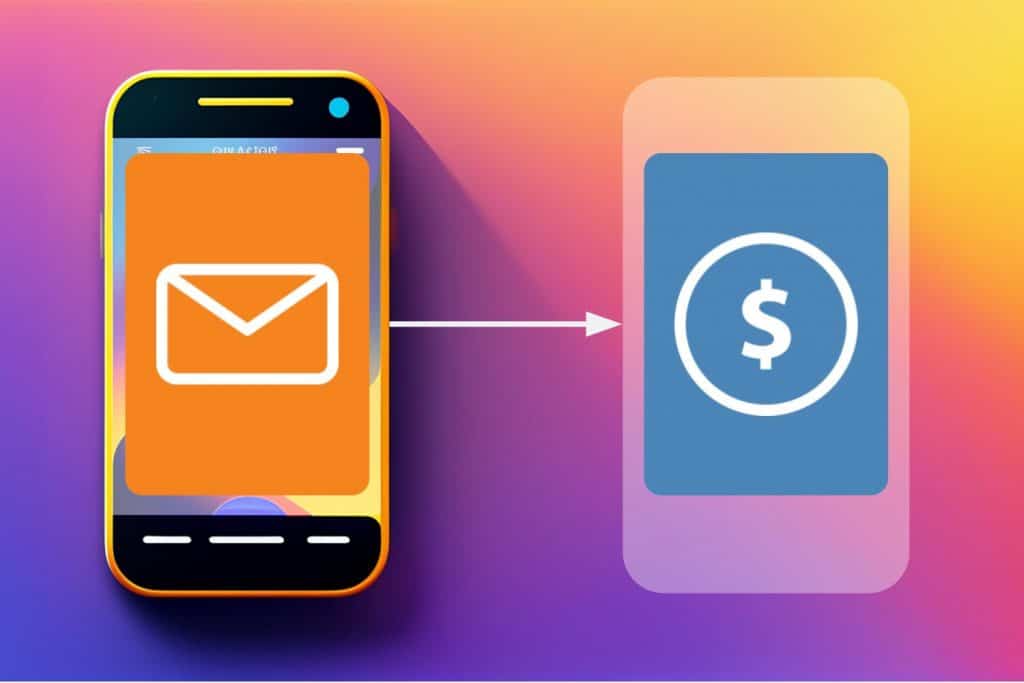
“The recent achievements in natural language modeling bring many new opportunities to willing entrepreneurs,” explains Leonardus Herps. “Our tandem with PortaOne provides these new entrants with the technology (PortaSwitch) and the P2A messaging expertise (RGTN).”
Andriy Zhylenko, CEO of PortaOne, expands on this idea: “What makes the RGTN offering strong is that PortaSwitch comes with ready-to-use billing in mind,” he says. “Many platforms and aggregators offer you great APIs. However, they are built around generating their profit. RGTN and PortaSwitch built our offering around generating profit for you.”
We asked Mr. Herps and Mr. Zhylenko to tell us what they think might be the most compelling use case for P2A messaging.
Leslie Herps: How Tesla Brought P2A Messaging to Old Good SMS
“Tesla is one of the world’s most technologically advanced car manufacturers, right? Yet it uses 30-year-old SMS technology to connect with its customers. Whenever I need a new windshield or want to update my car’s firmware, I use the Tesla mobile app. Then Tesla sends me an SMS, to which I can reply. There are no URLs, tracking numbers, phone calls, or waiting for the next available representative. You simply reply to an SMS and get another SMS with the necessary advice,” explains Mr. Herps.
“I can even respond via SMS if my car’s firmware update takes longer than expected. They will advise on the best option: cancel, drive, wait for an update, or finish installing. You can also send an SMS to your local Tesla vendor for a spare part, and they will come to your front door with it.
“If you need to postpone for any reason, just send another SMS, and you will get a reply in human language: no customer support case ID, no calling and waiting at the support line. You send and receive messages whenever it’s convenient for you. Being in the telecom business, I also understand how this asynchronous approach saves their customer support resources for something more meaningful. It’s a wise combination of A2P and P2A messaging traffic.”
How P2A Messaging Helped a Metal Fan Vote at the Eurovision Song Contest
“Being a lifelong fan of heavy metal (GitHub: truemetal74), my interest in Eurovision is purely professional,” jokes Andriy Zhylenko. Nevertheless, like it or not, Eurovision is a powerful new audience generator for talented pop bands. Since 2003, Ukraine has won Eurovision three times (Ruslana, Jamala, and Kalush Orchestra). That’s a unique outcome no other country has achieved in this song contest since the 2000s. (Ireland was a winner three times in a row; that was in the 1990s, though.)
P2A Messaging and Eurovision: How Is It Similar to the US Presidential Elections?
Showbiz = scandals (and sandals). Therefore, you can imagine why the voting system at Eurovision is more complicated than the US presidential elections. And it gets updated once every several years to ensure fraud resistance (and to enable the content writers to compete for the “best Eurovision new voting system text or video explainer.”)
To make this long story short: (1) viewer votes decide what countries qualify for the semi-finals; (2) viewers in non-participating countries can vote online; (3) jury votes are combined with votes from the global audience to decide the final result.
P2A Messaging and Televoting
Five countries-participants of EBU introduced Eurovision televoting in 1997 as an alternative to a traditional jury system. Fans can vote by calling or texting the short numbers displayed on a TV screen during the show broadcasts. By 2004 all participating countries were using televoting. In 2013, Eurovision introduced mobile apps (Android and iOS). Among other features, customers of those mobile apps can televote for their favorite songs. Germany-based Digame is EBU’s long-term partner for televoting.
Televoting did not always go rosy-cozy. In 2008, EBU introduced a series of changes to its Eurovision SMS televoting system in the UK after the phone-in scandal, a.k.a. the Richard and Judy controversy. The essence of the debate was simple, as usual:
- The key players in the televoting ecosystem admitted to overcharging their customers (telecom network subscribers).
- Technology providers influenced the televoting outcome in favor of certain contestants.
In 2022, Australia became the first country participant to allow only in-app voting via its dedicated digital platform. Spoke Interactive claims to be behind this move. Within the next several years, we will likely see Eurovision’s P2A messaging evolve further and at a massive scale.
TL;DR
P2A messaging is huge already, and it is going to grow exponentially during the next decade. If you are considering your “next big telco thing” after VoIP, P2A messaging might be a great starting point. At PortaOne, we help companies such as RGTN build a reliable and cost-efficient technology stack for their new (and existing) business models. We invest in long-term relationships and elegant solutions. That’s why customers like Leonardus Herps stay with us (and stay in business) for decades. Please visit our website to find your relevant product offering, or contact sales@portaone.com to discuss how our team can help.


